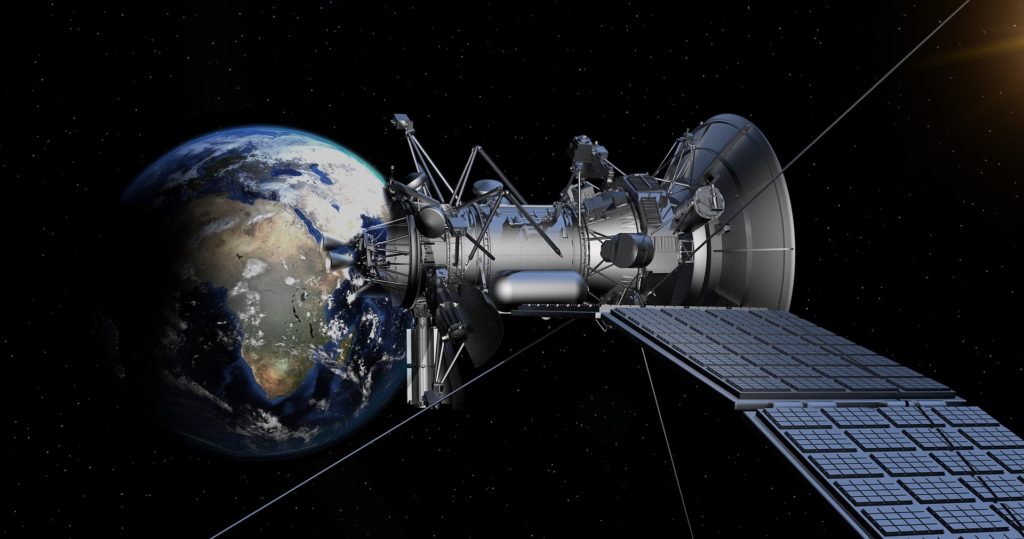
The International Astronomical Union (IAU), an umbrella organization representing over 13,500 astronomy professionals, called on 3 June for stricter regulations controlling the growth of so-called satellite constellations.
A satellite constellation is the name given to networks of artificial satellites with coordinated ground coverage, operating together under shared control, synchronized so that they overlap well in coverage, the period in which a satellite or other spacecraft is visible above the local horizon.
The deployment of these groups of satellites – usually in low-Earth orbits – has begun to increase rapidly over the last few years with plans to deploy potentially tens of thousands of them, at which point satellite constellations will come to outnumber all previously launched satellites.
The IAU has scientific concerns about these satellites as their surfaces are made of highly reflective metals – this is why they often appear to the naked eye on Earth as slow moving dots. These reflections are not always visible to the naked eye but “can be detrimental to the sensitive capabilities of large ground-based astronomical telescopes, including the extreme wide-angle survey telescopes currently under construction”.
Secondly, the IAU is concerned that “despite . . . efforts to avoid interfering with radio astronomy frequencies, aggregate radio signals emitted from the satellite constellations can still threaten astronomical observations at radio wavelengths”.
“Recent advances in radio astronomy, such as producing the first image of a black hole or understanding more about the formation of planetary systems, were only possible through concerted efforts in safeguarding the radio sky from interference,” the union said.
The IAU recommended that “all stakeholders in this new and largely unregulated frontier of space utilization work collaboratively to their mutual advantage”, while acknowledging that “significant effort has been put into mitigating the problems with the different satellite constellations”.
Satellite constellations “can pose a significant or debilitating threat to important existing and future astronomical infrastructures”, the IAU said.
It urged designers, developers and policy makers to work with the astronomical community to “analyze and understand” the impacts of satellite constellations, and to devise a regulatory framework “to mitigate or eliminate the [potential] detrimental impacts on scientific exploration as soon as practical”.
“The IAU’s Commission B7 Protection of Existing and Potential Observatory Sites welcomes the opportunity to work proactively with everyone involved in these efforts,” the union concluded.
The union’s statement comes as some astronomers have expressed concerns that plans by Elon Musk’s California-based aerospace manufacturer SpaceX to launch over 12,000 Starlink satellites will undermine their ability to study the universe with the use of ground-based telescopes as the satellites may reflect sunlight towards Earth. Without naming Starlink, the IAU expressed similar concerns in its statement.
The Royal Astronomical Society (RAS), the Association of Universities for Research in Astronomy (AURA) and the European Southern Observatory (ESO) also released statements on the Starlink launch and increasing number of satellite constellations soon to orbit the Earth.
The RAS is concerned that “increasing the number of satellites so significantly presents a challenge to ground-based astronomy” as the new “networks could make it much harder to obtain images of the sky without the streaks associated with satellites, and thus compromise astronomical research”.
It noted that the scale of the planned projects means that “there is also the prospect of a significant and lasting change to the views of the night sky until now enjoyed throughout human history and pre-history”. The night sky is part of humanity’s cultural heritage, the society said, and thus “deserves protection”.
While there has been no apparent consultation between SpaceX and the scientific community in advance of the Starlink launch, the society noted that after initial press reports Musk expressed a desire to minimize the impact on astronomy, an offer which the RAS welcomes.
It urged SpaceX – and other satellite providers such as OneWeb, Amazon and Telesat – to work with “scientists, engineers and others to mitigate the effects of the new constellations”, and to consider the potential impact on “human heritage”.
Likewise, AURA – the managing organization for many ground-based telescopes for National Science Foundation (NSF), both extant and under construction – expressed concern that the Starlink constellation could have a significant (and negative) impact on research using such telescopes.
This would include, for example, the Large Synoptic Survey Telescope (LSST), under construction by NSF in Chile and slated to begin wide-field imaging of the sky in 2021. LSST will create an astronomical survey that depends on dark skies for its core science.
AURA noted that LSST’s frequent imaging of the same region of sky “will be a mitigating factor for Starlink interference, providing enough uncontaminated images to reject the images that contain satellite trails or other anomalies”.
In the case of the full constellation of Starlink satellites, AUSA said that initial calculations indicate that LSST images would – on average – contain about one satellite trail per visit for an hour or two after sunset and before sunrise so the number of pixels affected would be around 0.01 percent or smaller.
“Therefore, for LSST, even a constellation of about 10,000 Starlink satellites would be a nuisance rather than a real problem,” the statement said.
However, AURA emphasized that “the impact of satellite constellations on other AURA telescopes that have wider fields, longer exposures, and/or less sophisticated data processing pipelines may be much more significant”, and that Starlink may be only the first of many technologies that could affect these kinds of studies.


Leave a Reply